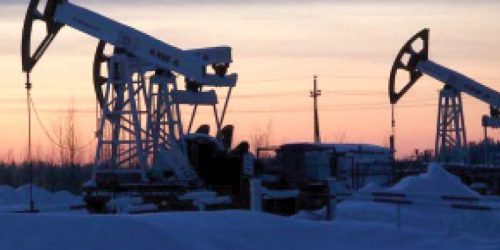The energy crisis has continued to persist in Pakistan at a time when demand for oil and gas is on a rise following a rebound in industrial production and exports in the middle of the Covid-19 pandemic.
“The oil and gas production fell 6% and 4%, respectively, in the second quarter (Oct-Dec) of fiscal year 2021 despite new productions from five oil fields and four gas fields was added in the system,” according to a Topline Research report.
Earlier, gas shortfall peaked following a drop in temperature to freezing levels in different parts of the country as demand for fuel surpassed supplies by a wide gap. This triggered prolonged CNG fuel crisis for the transport sector and sparked announced and unannounced gas load-shedding in industrial and residential areas.
Besides, the country saw a nationwide power blackout on Saturday January 9 for several hours following a technical fault at Guddu power plant.
The additional production from the new oil and gas fields remained insignificant, which was why they failed to offset drop in production from old fields. The situation demanded the government to create an enabling environment for oil and gas exploration firms to expedite efforts to find new oil and gas deposits. The country has seen no big discovery of the hydrocarbons for over a decade now.
Read Traders warns of gas shortage in 2021
In the absence of a major discovery for a long time, Pakistan’s reliance on imported energy is on the rise particularly for gas. Industrialists have held the government responsible for the growing gas shortfall in the country. They have requested the government to make arrangement for import of gas during the summer season when power crisis is likely to re-emerge and cripple industrial production.
They have also demanded the government to develop a policy which would enable the private sector to set up new gas (RLNG/re-gasified liquefied natural gas) import terminals.
The other day, the government invited bids from oil and gas exploration firms for 20 blocks for find of new oil and gas deposits. However, domestic exploration firms bid for only 15 blocks. This is the second time when the government received a poor response from the exploration firm.
According to Topline Research, Pakistan’s oil production during the second quarter of the current fiscal year fell by 6% on a year-on-year basis to 76,331 barrels of oil per day (bopd) due to decline in production from Tal block fields like Mardankhel and Makori Deep by 27% and 31%, respectively.
Oil production during the first half of FY21 fell at the same rate of 6% on year-on-year basis.
Production from Chanda, Maramzai, and Makori East increased in the range of 5-46%.
“Chanda’s production increased due to induction of Chanda-5 well. Production from Nashpa increased 7% on a quarter-on-quarter basis as field was on an annual turnaround in the last quarter (September 3-9, 2020).”
“As per PPIS data, five new fields were inducted to production line during the second quarter under view namely Baqa (300+ bopd; operated by UEP), Saand (100+ bopd; operated by OGDC), Tando Allay Yar SW (90+ bopd; operated by OGDC), Bolan East (800+bopd; operated by MARI) and Mangrio (200+bopd; operated by OGDC),” the research house said.
Pakistan gas production declined by 4% year-on-year to 3,409 mmcfd (million cubic feet per day) as flows from KPD, Kandhkot and Qadirpur fell in the range of 6-18%.
During first half of the fiscal year, production declined 3% on a year-on-year basis.
“During the second quarter, Kandkhkot field’s production declined due to lesser offtake from power generation companies. Mari field filled those Kandhkot field’s flows as depicted from 12% increase in its production.”
“Four new fields were added to the production line, namely Saand (7+ mmcfd; operated by OGDC), Tando Allah Yar SW (9+ mmcfd; operated by OGDC) and Mangrio (3+ mmcfd; operated by OGDC) and Baqa (1mmcfd, operated by UEPL),” it said.





